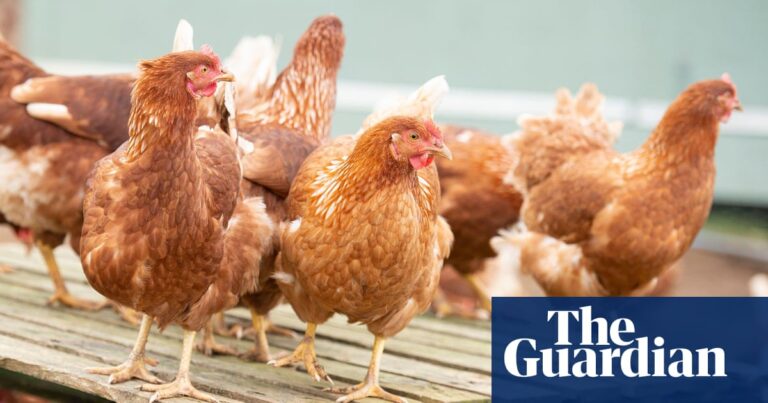California Battles White-Nose Syndrome Threatening Bat Populations
California’s Bat Crisis: The Fight Against White-Nose Syndrome
When you think of California’s wildlife, what comes to mind? Grizzly bears, sea otters, or perhaps those adorable coastal sea lions? But let’s take a moment to shine a spotlight on some of the quieter, lesser-known residents of the Golden State—the bats. These creatures play a vital role in our ecosystem, yet they’re under siege from a grave threat: White-Nose Syndrome (WNS). This isn’t just a tale of bats; it’s an ecological wake-up call that demands our attention.
What is White-Nose Syndrome?
Imagine waking up to find your house slowly being engulfed by a creeping fog while you sleep peacefully unaware. That’s somewhat analogous to what White-Nose Syndrome does to bats. This fungal disease is caused by the organism Pseudogymnoascus destructans, which invades the skin of hibernating bats. It typically appears as a white fuzz on their noses—hence the name.
The ramifications of WNS are dire. It disrupts the bats’ hibernation cycles, leading them to wake up too early in search of food when it’s scarce. This early riser scenario makes them more susceptible to death from starvation or exposure. The real kicker? This syndrome has been linked to the deaths of millions of bats across North America, and California is facing its own potential crisis.
Why Bats Matter
You might be thinking, “Why should I care about bats?” Well, let’s unravel that. Bats are nature’s pest control experts. A single bat can consume up to 1,200 mosquito-sized insects in one night. With fewer bats, you can only imagine the increase in insect populations—which means more bugs buzzing around during summer evenings, right?
Moreover, bats play a crucial role in pollination and seed dispersal. Their nocturnal activities help in the growth of various plant species, ultimately supporting the overall ecosystem. If we don’t act against WNS, we could end up losing not just the bats themselves, but also the benefits they bring.
A Growing Threat in California
While White-Nose Syndrome was first identified back in 2006 in New York, it has been slowly making its way across the United States. California hasn’t been immune to this threat. Bats, particularly the little brown bat and tricolored bat, are under significant risk. Though WNS has not yet been confirmed in California, the fungus has been detected in neighboring states. It’s as if we’re sitting on a ticking time bomb.
The California Department of Fish and Wildlife (CDFW) has ramped up efforts to monitor bat populations and identify any signs of WNS. But let’s be honest: once this syndrome grabs hold, it spreads like wildfire.
The Ecological Impact
The ecological ramifications of losing bats due to WNS are alarming. Here’s a glimpse of what could happen:
- Increased Insect Population: More pests mean not just annoying bites but potential crop damage.
- Circumstantial Pollination Problems: Many plants depend on bats for pollination. Losing bats could jeopardize the growth of these plants, affecting the entire food chain.
- Economic Loss: Farmers and communities relying on the natural pest-control services that bats provide could see significant economic impacts.
How California is Fighting Back
You might be wondering, “What’s being done to fight this?” Great question! California has launched several initiatives aimed at protecting bat populations and preventing the spread of WNS.
Awareness Campaigns
Education is at the forefront. State wildlife agencies are working to spread awareness about the importance of bats and the threats posed by WNS. They’re collaborating with local communities to foster conservation efforts. Simply put, knowledge is power!
Habitat Protection
Bats need places to roost and hibernate—think of it as their comfy couch for Netflix binges. Conservationists are working on protecting existing habitats while also creating new ones. Preserving caves, old buildings, and other roosting sites is crucial.
Monitoring Programs
Effective monitoring is essential. Field surveys and research projects are in place to track bat populations and their health. By keeping a close eye on these creatures, California can respond quickly if WNS makes a move.
Research Initiatives
Science to the rescue! Research efforts are underway to better understand WNS and develop potential treatments. Understanding how the fungus operates is vital to finding a possible cure and developing future preventative measures.
What Can You Do to Help?
Alright, so now you know about the issue at hand, but what can you personally do to help combat this mushrooming menace? Here’s your action plan:
- Spread the Word: Talk to friends and family about the importance of bats and the dangers linked to WNS. Awareness is half the battle.
- Support Local Conservation Efforts: Volunteer with wildlife organizations dedicated to bat conservation. Your time and efforts can make a huge difference.
- Create Bat-friendly Spaces: If you have a yard, consider installing bat houses. These structured dwellings can support the bat population in your area.
- Report Sightings: If you see bats in distress or suspect WNS activity, report it to local wildlife authorities. Every bit helps in the battle against this syndrome.
The Road Ahead
As we look toward the future, we must stay vigilant. The threat of White-Nose Syndrome looms large, but through education, awareness, and conservation efforts, there’s hope. Communities crossing their fingers won’t save the bats, but proactive measures can cushion the blow and even turn the tide in their favor.
Conclusion
The plight of California’s bats against White-Nose Syndrome is a critical call to action. Just as we lend a hand to our friends in need, it’s time we extend our support to these unsung heroes of our ecosystem. Whether you’re swatting away pesky bugs or enjoying a peaceful evening outdoors, remember that the little brown bat or tricolor bat might be working tirelessly overhead. By understanding and supporting their cause, we can help ensure that these beneficial creatures don’t fade into the night. Let’s rally together for our flying allies because when bats thrive, we all benefit.
FAQs
1. What is White-Nose Syndrome?
White-Nose Syndrome is a fungal disease affecting hibernating bats, causing disruption in their hibernation cycle and leading to high mortality rates.
2. How does White-Nose Syndrome affect bats?
Bats infected by WNS are more likely to wake up prematurely from hibernation in search of food, which can lead to starvation or exposure, ultimately causing death.
3. What are some signs of White-Nose Syndrome in bats?
You might see a white fungus on their noses or wings, increased activity during winter months, or dead bats near roosting sites.
4. How can I help in the battle against WNS?
You can spread awareness, volunteer for local conservation efforts, create bat-friendly habitats, and report any signs of sick bats to local wildlife authorities.
5. Are there any effective treatments for White-Nose Syndrome?
Research into effective treatments is ongoing, but prevention and habitat protection are key strategies currently focused on to help bat populations.






